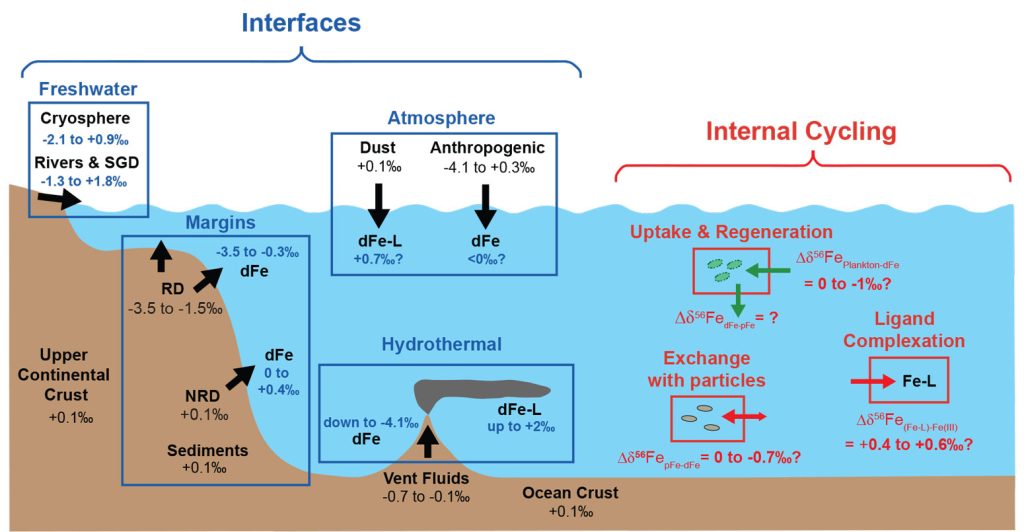Do you want to know more about iron and its isotopes? This review is for you!
Jessica Fitzsimmons and Tim Conway (2023, see reference below) present a comprehensive review of iron and iron isotope sources, internal cycling, and sinks in the ocean, including the history of the field and the role that GEOTRACES has played in driving development of this exciting oceanic tracer. They summarise the end-member isotope signatures of different iron sources (dust, sediments, hydrothermal venting). Then, they review how the use of these isotopes contributes to improving our understanding of marine iron biogeochemistry and oceanic iron distributions: disentangling multiple iron sources, identifying the redox state of the sedimentary sources, distinguishing anthropogenic versus natural dust sources, and investigating different hydrothermal processes. They also review ways in which iron isotope fractionation might be used to understand the internal oceanic cycling of iron, including speciation changes, biological uptake, and particle scavenging. In the end, the authors propose an overview of future research needed to expand the utilisation of this cutting-edge tracer.

Reference:
Fitzsimmons, J. N., & Conway, T. M. (2023). Novel Insights into Marine Iron Biogeochemistry from Iron Isotopes. Annual Review of Marine Science, 15(1). Access the paper: 10.1146/annurev-marine-032822-103431
